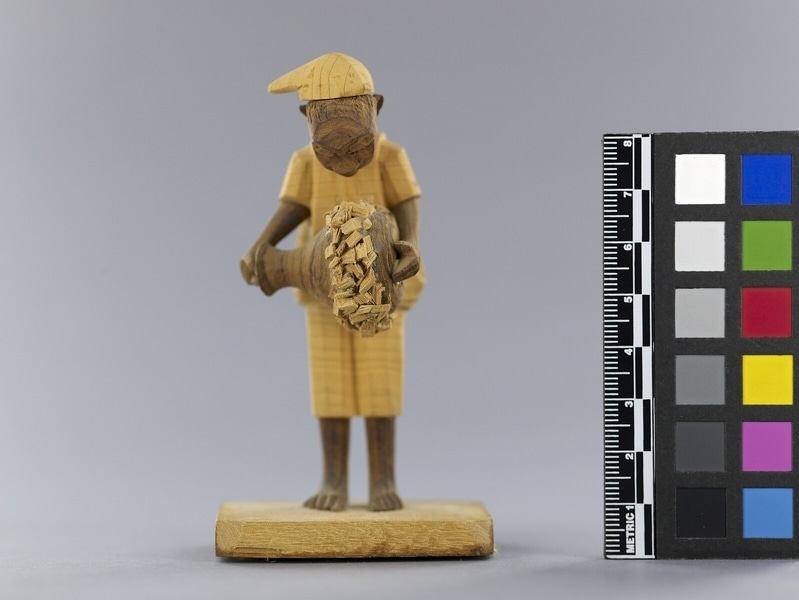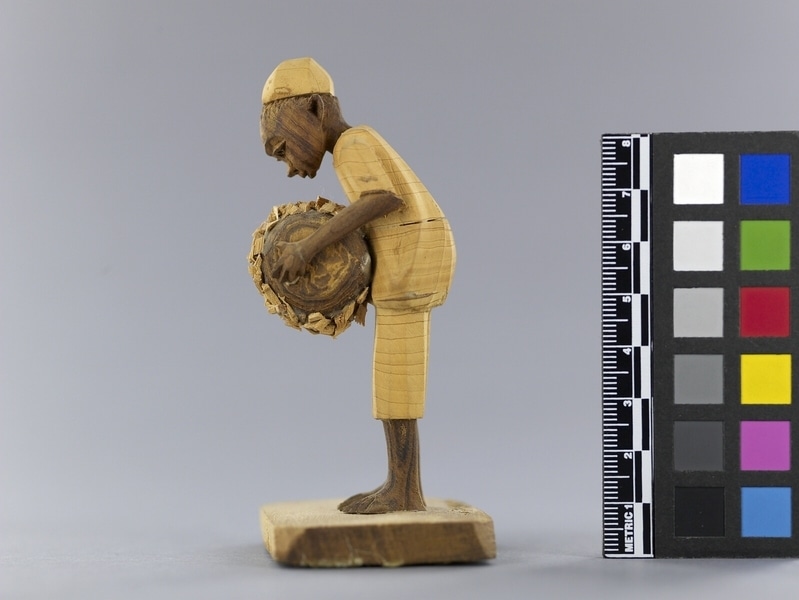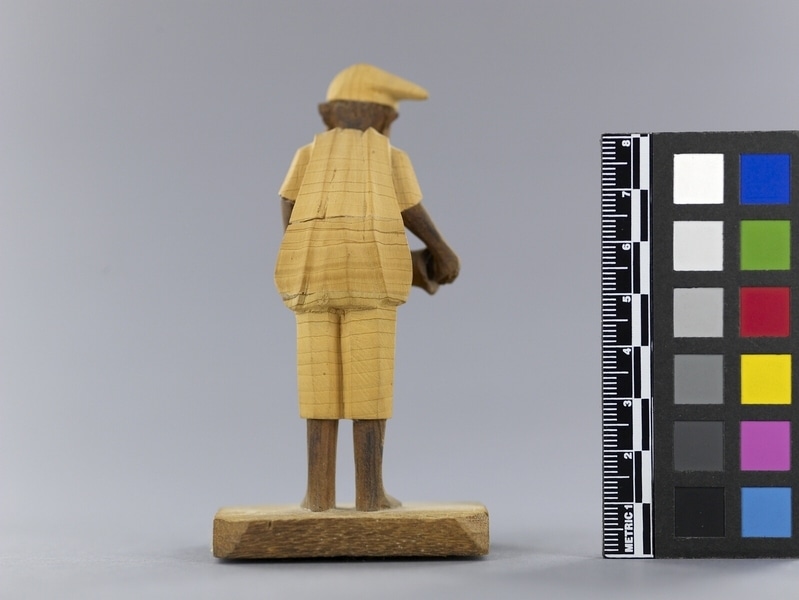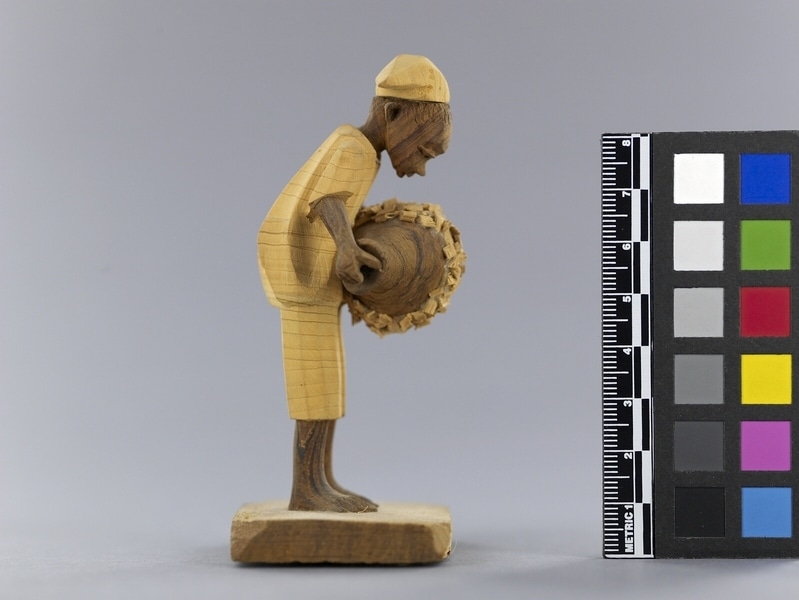Thorn Carving Item Number: Af399 from the MOA: University of British Columbia




Description
Figure representing a man wearing short pants, a short-sleeved tunic, and a cap while holding a calabash drum between his hands. Small chips resembling cowrie shells or beads are strung on the outside centre of the calabash. The neck of the calabash is being held in his right hand, and his left hand is against the bottom. Clothes and 'shells' are light yellow-brown. Drums, limbs, and head are dark brown. On a light brown wood base.
History Of Use
Thorn carvings are miniatures depicting scenes from Nigerian life. This type of carving began circa 1930. Thorns vary in size. They can be as large as 12.7 cm. long and 9.6 cm. wide. They are comparatively soft and easily carved. The light yellow-brown thorn and the dark brown thorn come from the Ata tree; the light red-brown thorn comes from Egun trees. The parts are glued together with viscous paste made from rice cooked with water. They are carved by men.
Cultural Context
craft; tourist art
Item History
- Made in Nigeria before 1972
- Collected during 1972
- Owned by Andrew Stewart and Jessie Stewart before February 8, 1980
- Received from Andrew Stewart (Donor) and Jessie Stewart (Donor) on February 8, 1980
What
- Name
- Thorn Carving
- Identification Number
- Af399
- Type of Item
- carving
- Material
- stain, wood, rice adhesive, egun thorn and atum thorn
- Manufacturing Technique
- glued and carved
- Overall
- height 9.8 cm, width 5.3 cm, depth 4.3 cm
Who
- Culture
- Yoruba
- Previous Owner
- Andrew Stewart and Jessie Stewart
- Received from
- Andrew Stewart (Donor) and Jessie Stewart (Donor)
Where
- Holding Institution
- MOA: University of British Columbia
- Made in
- Nigeria
When
- Creation Date
- before 1972
- Collection Date
- during 1972
- Ownership Date
- before February 8, 1980
- Acquisition Date
- on February 8, 1980
Other
- Item Classes
- carvings & sculpture
- Condition
- fair
- Accession Number
- 0590/0085